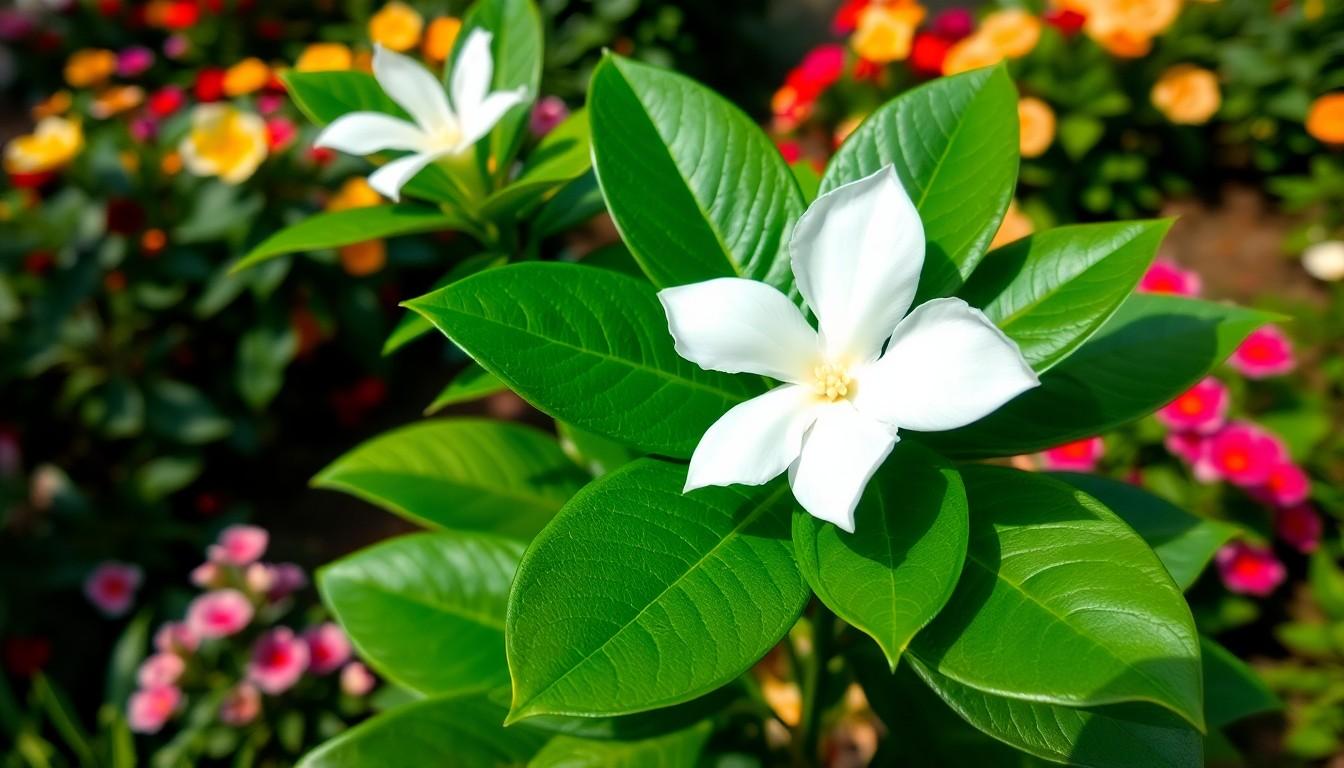Gardenias are the divas of the plant world, flaunting their fragrant blooms and glossy leaves like they own the garden. But just like any celebrity, they can fall victim to a few pesky ailments that threaten their star status. If you’ve ever found your gardenia looking less than fabulous, you’re not alone. Understanding gardenia diseases is key to keeping these beauties thriving.
Overview of Gardenia Plants
Gardenias belong to the Rubiaceae family and thrive in warm climates. Known for their glossy, dark green leaves, these plants often produce highly fragrant white or cream blooms. Blooming typically occurs in late spring to summer, making them a sought-after choice for gardens and landscaping.
These plants prefer well-drained acidic soil, maintaining a pH level between 5.0 and 6.0. Adequate moisture is essential; gardenias benefit from consistent watering without becoming waterlogged. Sunlight requirements vary, with morning sun and afternoon shade providing ideal conditions for optimal growth and health.
Fertilizing gardenias with a balanced, slow-release fertilizer during the growing season promotes robust foliage and abundant flowering. Regular pruning encourages a bushier appearance and helps maintain their shape. Pests like aphids, spider mites, and whiteflies often target gardenias, making early detection via monitoring vital for preserving plant health.
Diseases affecting gardenias include root rot, leaf spot, and powdery mildew. Root rot typically arises from overwatering and poorly drained soil, while leaf spot manifests as dark, circular spots on leaves. Powdery mildew appears as a white, powdery coating, usually in humid conditions.
Awareness of these conditions strengthens a gardener’s ability to maintain vibrant and healthy gardenia plants. Regular inspection and prompt action can significantly reduce the impact of diseases and pests. For long-lasting beauty and fragrance, understanding and addressing potential issues is crucial.
Common Gardenia Diseases

Understanding common gardenia diseases aids in maintaining plant health. Familiarity with these diseases helps in early detection and intervention.
Fungal Diseases
Fungal diseases affect gardenias and can manifest in various ways. Powdery mildew is one prevalent issue, with white, powdery spots appearing on leaves. Leaf spot presents as dark brown or black lesions, leading to premature leaf drop. Root rot often occurs due to overwatering, causing roots to decay and plants to wilt. Treating fungal infections includes applying fungicides and ensuring proper ventilation around the plants. Implementing good cultural practices, such as adequate watering and spacing, minimizes risks associated with fungal diseases.
Bacterial Diseases
Bacterial diseases also pose threats to gardenias. One common bacterium, Xanthomonas campestris, causes leaf spots that appear as dark areas surrounded by yellow halos. Symptoms often lead to leaf curl and eventual drop, impacting plant aesthetics. Control measures include removing infected foliage and using approved bactericides. Promoting air circulation and avoiding overhead watering further limits bacterial spread. Regular inspections for early signs of infection can substantially help manage and prevent bacterial diseases.
Viral Diseases
Viral diseases in gardenias are less common but can still occur. Gardenia mottled yellow virus causes yellowing and mottling of leaves, affecting overall vigor. Infected plants may show stunted growth and reduced flowering, impacting their appeal. While no cure exists for viral infections, interventions include removing and destroying infected plants to prevent spread. Maintaining healthy plants through proper care weakens the chances of viral infections taking hold. Regular monitoring keeps gardenias thriving despite potential viral threats.
Identifying Symptoms Through Pictures
Visual cues play a crucial role in diagnosing gardenia diseases. Observing the symptoms through pictures provides valuable insight into the plant’s health.
Leaf Discoloration
Leaf discoloration commonly indicates nutrient deficiencies or disease presence. Healthy leaves should exhibit a rich green color. Yellowing leaves often suggest issues with iron availability or root problems. Dark spots on leaves might indicate a fungal infection like leaf spot. Pictures illustrating these symptoms help in identifying the nature of the problem efficiently.
Wilting and Dropping Leaves
Wilting and dropping leaves signify stress in gardenias. Insufficient water leads to drooping foliage. Overwatering can also cause this symptom, resulting in root rot. Observing leaf drop can point toward environmental changes, such as temperature fluctuations. Photographs capturing these conditions aid in recognizing the underlying causes quickly.
Flower Issues
Flower issues present additional challenges for gardenia care. Blooms that appear faded may suffer from insufficient light or nutrient imbalance. Abnormal growth, such as clusters of small or deformed flowers, often suggests a viral infection. Pictures showcasing these flower problems assist gardeners in determining the appropriate actions to restore plant health.
Prevention and Treatment
Maintaining gardenia health requires strategic prevention and treatment methods. Addressing gardenia diseases involves a two-pronged approach, focusing on cultural practices and chemical treatments.
Cultural Practices
Implementing good cultural practices significantly enhances gardenia resilience. Ensuring well-drained soil promotes optimal root health. Regularly checking soil moisture levels helps prevent both overwatering and drought stress. Gardenias thrive with mulching, which maintains soil moisture and suppresses weeds. Providing adequate spacing between plants improves air circulation, reducing humidity around foliage. Monitoring for pests early prevents infestations that can lead to disease. Properly timed pruning encourages healthy growth and airflow, minimizing disease risk. These practical steps empower gardeners to promote thriving gardenias.
Chemical Treatments
Utilizing chemical treatments becomes necessary when cultural practices alone aren’t effective. Fungicides specifically target fungal diseases, like powdery mildew, maintaining plant health. Applying bactericides can control bacterial infections, aiding in the recovery of affected plants. Choosing products labeled for gardenias ensures compatibility with their specific needs. Follow instructions for proper dosage and application timing, as this enhances treatment efficacy. Spraying insecticidal soap helps combat aphid and spider mite infestations, limiting pest damage. Using these chemical approaches alongside supportive cultural practices yields healthier, more resilient gardenias.
Conclusion
Maintaining the health of gardenias requires vigilance and knowledge about potential diseases. By recognizing symptoms early and implementing effective prevention strategies, gardeners can ensure their gardenias thrive. Regular monitoring and proper care not only enhance the plants’ beauty but also their resilience against pests and diseases.
Utilizing visual aids such as pictures can significantly assist in diagnosing issues, allowing for timely interventions. With the right approach and attention, gardenias can continue to flourish, bringing their enchanting fragrance and elegance to any garden.

